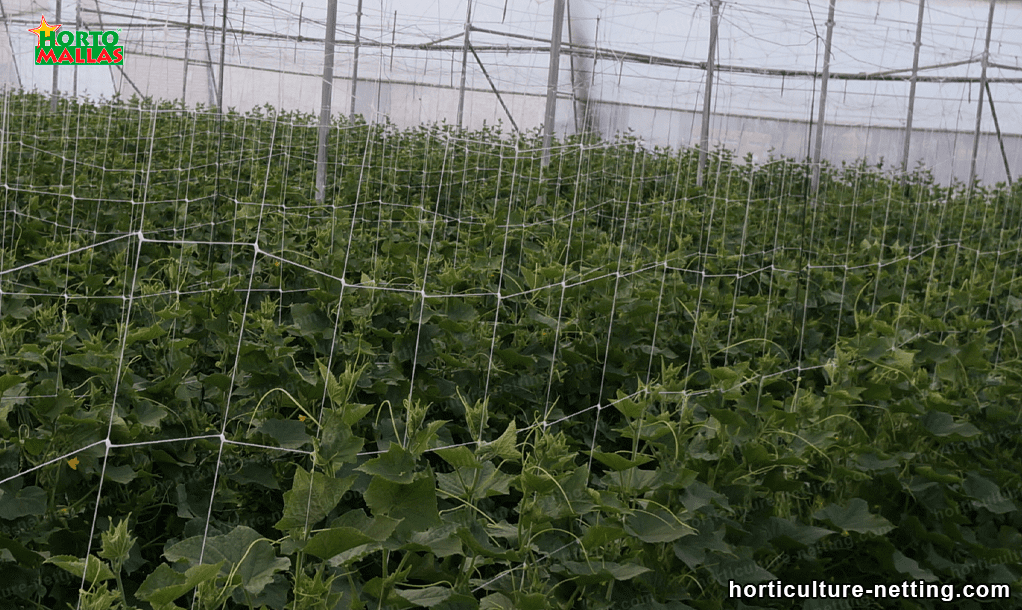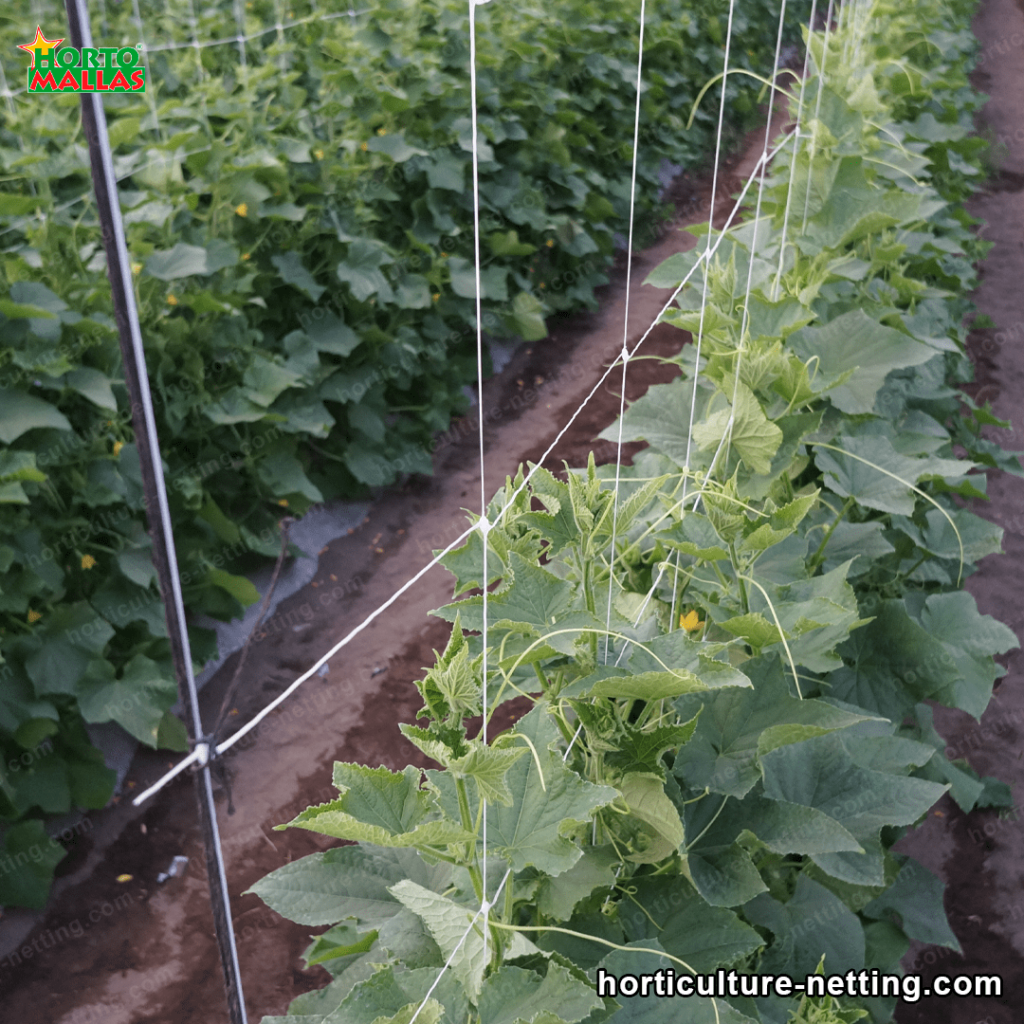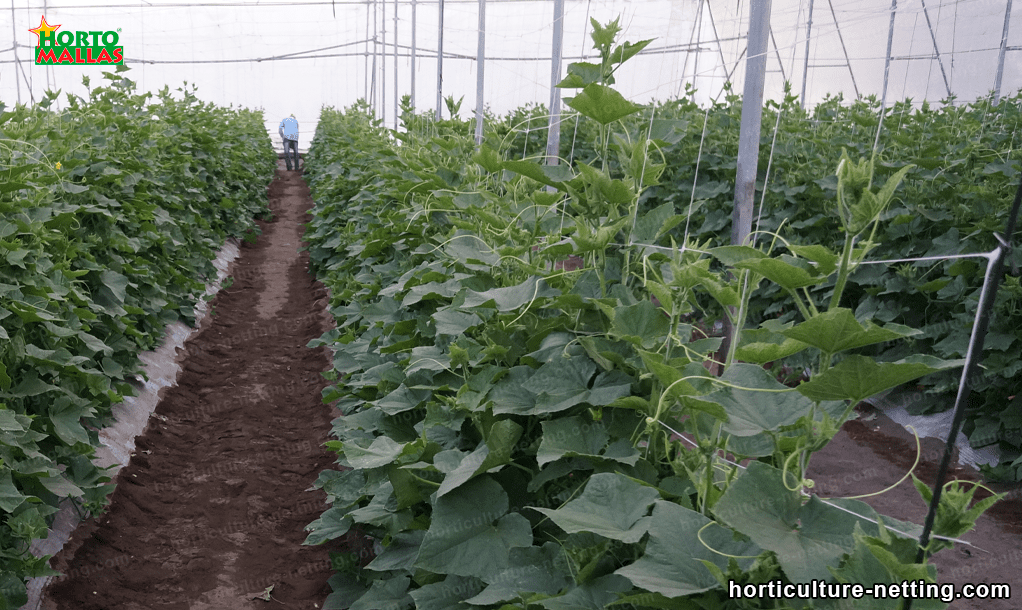Horticultural netting helps protect crops from damage caused by extreme temperatures, wind, hail, birds, and other animals.
This article will discuss the various ways that using horticultural netting can help to increase crop quality. The most important way that horticultural netting can improve crop quality is by providing a physical barrier to protect the crop from extreme temperatures, wind, and hail. Extreme temperatures can cause damage to the crop, including wilting, premature blooming, and decreased yields. Wind and hail can also damage the crop, and can cause it to become more susceptible to disease.
Horticultural netting serves as a physical barrier that mitigates environmental hazards, reducing the risk of crop damage. Additionally, it safeguards crops from birds and other animals that might be attracted to them. Birds can cause considerable damage to a crop by eating the fruit, leaves, and stems. They can also carry diseases, which can further reduce crop quality and yields. By using horticultural netting, farmers can keep birds away from the crop, reducing the risk of crop damage. The use of horticultural netting can also help to reduce the spread of disease.

Many diseases can spread quickly through a crop, resulting in decreased yields and poor quality.
By using horticultural netting, farmers can create a physical barrier that will reduce the spread of disease, thereby increasing the crop’s quality and yield. Horticultural netting can also help to reduce the amount of weeds in the crop. Weeds can compete with the crop for water, sunlight, and nutrients, resulting in decreased yields and poor quality.
By creating a physical barrier between the crop and the weeds, horticultural netting can help to reduce the amount of weeds in the crop, resulting in improved crop quality and yields. Finally, horticultural netting can be used to increase the efficiency of irrigation. By using horticultural netting, farmers can create a physical barrier that will direct water to the parts of the crop that need it most, while also reducing water waste. This can help to increase the efficiency of irrigation, resulting in improved crop quality and yields.
In conclusion, using horticultural netting can be a great way to increase crop quality and yields. It provides a physical barrier between the crop and potential hazards, reducing the risk of crop damage. It can also help to reduce the spread of disease, reduce the number of weeds, and increase the efficiency of irrigation. By taking advantage of the benefits provided by horticultural netting, farmers can increase the quality and yield of their crops.

How to use horticultural netting
Horticultural netting is a versatile and essential tool for gardeners and landscapers. It is used to protect plants from pests, provide shade and create attractive boundaries. It is also used to train plants, provide additional support and create attractive displays. This essay will discuss the many uses of horticultural netting and provide tips for how to effectively use it. Horticultural netting is available in a wide range of sizes and materials. The most common netting materials are plastic, metal and nylon. Plastic netting is lightweight and flexible, making it ideal for small projects and light-duty applications. Metal netting is stronger and more durable than plastic, making it suitable for larger projects and more demanding applications. Nylon netting is strong and durable, making it suitable for larger projects and heavy-duty applications. Horticultural netting can be used for a variety of purposes, including pest control, providing shade and creating attractive boundaries.
To effectively use horticultural netting for pest control, it should be securely attached to the plant or structure to be protected. When attaching the netting, make sure to use clips or other fastening devices that are designed for use on netting. For providing shade, netting can be used to create a sunshade or windscreen. Additionally, netting serves as a barrier or windbreak, which mitigates wind damage and enhances outdoor comfort. To establish a barrier or windbreak, one can secure the netting to posts or other structures and fasten it at the top using clips or other devices. Horticultural netting can also be used to create attractive boundaries. To create an attractive boundary, secure the netting to posts or other structures and then attach the netting at the top with clips or other fastening devices.

It is important to choose the right netting for the job and make sure that the netting is secured properly. Netting can also be used to train plants.
When using netting to train plants, make sure to choose netting that is the right size for the plant and secure the netting to the plant or structure. It is also important to monitor the plants regularly to ensure that the training is effective. Netting can also be used to provide additional support for plants. When providing additional support for plants, make sure to choose netting that is the right size for the plant and secure the netting to the plant or structure.
It is also important to regularly check the plants to ensure that the netting is providing enough support. Finally, horticultural netting can be used to create attractive displays. To create an attractive display, make sure to choose netting that is the right size and shape for the display and secure the netting to the structure. It is also important to make sure that the netting is secured properly and to choose a netting color that complements the display. In conclusion, horticultural netting is a versatile and essential tool for gardeners and landscapers. It can be used for a variety of purposes, including pest control, providing shade, creating attractive boundaries and training plants. When using horticultural netting, it is important to choose the right netting for the job, secure the netting properly and monitor the plants regularly to ensure that the training is effective.
Leave a Reply